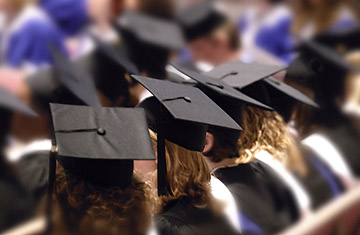
Trend in College Pricing 2009
The College Board, 20 pages
The Gist:
The College Board has released its annual report on the cost of higher education, and the news is distressingly predictable: despite the current economic downturn, college is getting more expensive. Tuition and fees for the 2009-10 school year at a private, four-year college or university now averages $26,273, a 4.4% increase from last year. Throw in room and board and you're up to $35,636. Public schools are a better deal, of course, but their price tag is growing even faster — up 6% or more. All this in a year where the cost of most everything else (as measured by the Consumer Price Index) actually fell. There is a silver lining: increased aid and tax benefits mean out-of-pocket costs for school are lower than they were five years ago, although only slightly.
Highlight Reel:
1. Climbing costs in the classroom: Private colleges and universities come with the heftiest bills, though most students rely on public colleges and universities (in fact, just a quarter of students face costs of $21,000 or more). Public schools are a relative bargain, but average tuition and fees at two-year public schools rose 7.3% from last year, to $2,544. In-state tuition and fees at public, four-year schools rose 6.5% this year to $7,020 ($15,213 with room and board). Out-of-state costs saw similar increases, to $18,548 for tuition and fees and $26,741 with room and board. New England was the most expensive region for several types of schools; private, four-year schools averaged $43,884 with room and board, compared with $30,220 in the southwest.
2. Out-of-pocket costs have drifted down: While tuition and fees have risen by up to 20% since 2004, the average net price of college has dropped. Due to the greater availability of grants, financial assistance and tax benefits, students pay an average of $1,100 less at private schools and $400 at public schools than they did five years ago. (The aid and benefits total $14,400 at private schools, $5,400 at public four-year schools and $3,000 at public two-year schools). In fact, after benefits, an average student at a two-year college or university pays nothing in tuition and fees and collects about $500 toward living expenses.
3. All schools are not created equal: The report reveals a remarkable wealth gap between the nation's institutes of higher education. Out of more than 2,250 public and private four-year schools, 18 had endowments averaging more than $500,000 per student as of June 2008. Of private universities granting doctorates, 10% of schools had 54% of the endowment wealth, averaging $1.5 million per student. Another 115 schools had endowments averaging $100,000-$500,000 per student, and the 2,000+ remaining schools had smaller endowments or none at all. Faculty pay varied widely as well. After adjusting for inflation, full-time faculty at two-year public schools saw no increase in salary between 1991-92 and 2007-08. At private, four-year schools, by contrast, faculty pay rose by 11%.
The Lowdown:
There's a certain cruelty to a rise in education costs amid an economic slump: it makes the single most effective tool to help the underemployed and jobless out of their rut become all the more unreachable. Though the government and private donors have stepped in to ease the financial crunch, the runaway costs of higher education threaten to make it unaffordable, especially to those who stand to gain the most from it. As the College Board report makes clear, the real-world benefit of college is not simply academic: the unemployment rate for those with bachelor's degrees is just half that for people with high school diplomas alone. Among those with bachelor's degrees, the median family income was $101,099 in 2008 — twice the family income for high school graduates.
The Verdict: Skim
